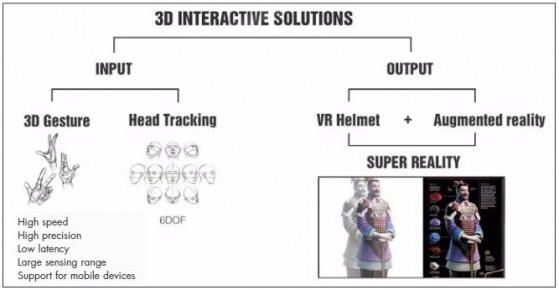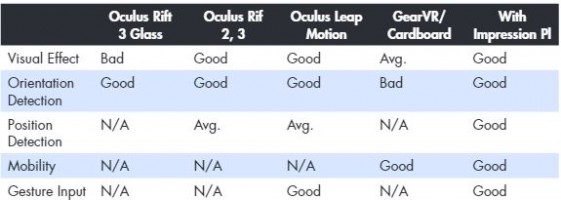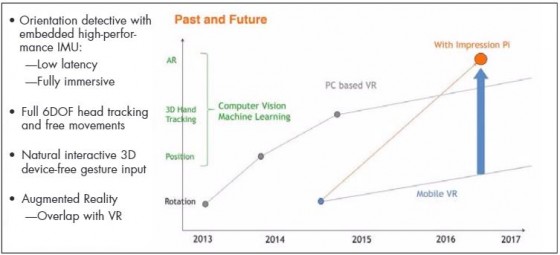Super Reality blurs the distinction between augmented and virtual.
The two-year-old company Usens walked away with being named a Top 10 Finalist in Siggraph’s Immersive Realities Contest. The company’s first development is a 3D hand-gesture-recognition technique and tracking for mobile VR headsets. The second is what the company is calling Super Reality: a combination of augmented and virtual reality, with a seamless transition between the two.

Both of these technologies are built into the company’s Impression Pi Core, which Usens hopes will show up in the next generation of VR HMDs. Usens points out the industry has grappled with a myriad of challenges such as gesture control and combining AR and VR technologies. The company thinks it has found a solution that not only solves these problems, but is light, portable, and allows users to embrace a truly immersive “Super Reality.”
The company says its Impression Pi’s natural 3D gesture recognition, orientation sensing, and 6DOF head position tracking allow users to control a display and use their hands and fingers like they would in the real world. The result is a more immersive VR experience, allowing users to do things like interact with people and/or objects in applications much more naturally than they could with a joystick or touchpad. The company thinks their technology will provide the breakthrough needed to move the industry forward.
The wireless Impression Pi offers mobility. Impression Pi is equipped with an internal proprietary computer vision module, which tracks both the user’s hands and position in the room; it can “read” the environment and shift as a user moves around. It is a light sensor module that can be adapted to a HMD that lets the user navigate the virtual world with his or her physical body, unencumbered by cords or accessories. The cameras “see” your hands, and give the system the “Super Reality” sense the company refers to.
Impression Pi’s features include:
- Wireless—can work with mobile phones without requiring cords (untethered)
- Super Reality—transitions smoothly between virtual reality and augmented reality
- Gesture Control—hand and finger recognition and interaction to sub-mm accuracy at more than 60 fps
- Head Tracking—ultra-low-latency head tracking to gain positional awareness with a movement range of more than 5 meters
- Ninety-degree Field of View—wider field of view than other headsets

The company developed its technology after studying the market and finding it wanting. The company says its SDK offers easy porting of content, and seamlessly integrates content from Unity and Google Cardboard, with others in the works. Usens will be shipping the developer kits by Christmas this year, and the company is currently seeking additional developer partnerships. The company says Impression Pi is also a reference design for potential industry partners for a modular frame compatible with Usens embedded Impression Pi Core.

What do we think?
We played with the Usens stuff at Siggraph, and in the VR Village. We were able to put our hands in the FOV of the HMD and see an avatar-like representation, which included finger recognition and movement. This is a clever technique and could make a significant improvement in VR. We’re looking forward to getting our hands on (and in) one of the devices.





